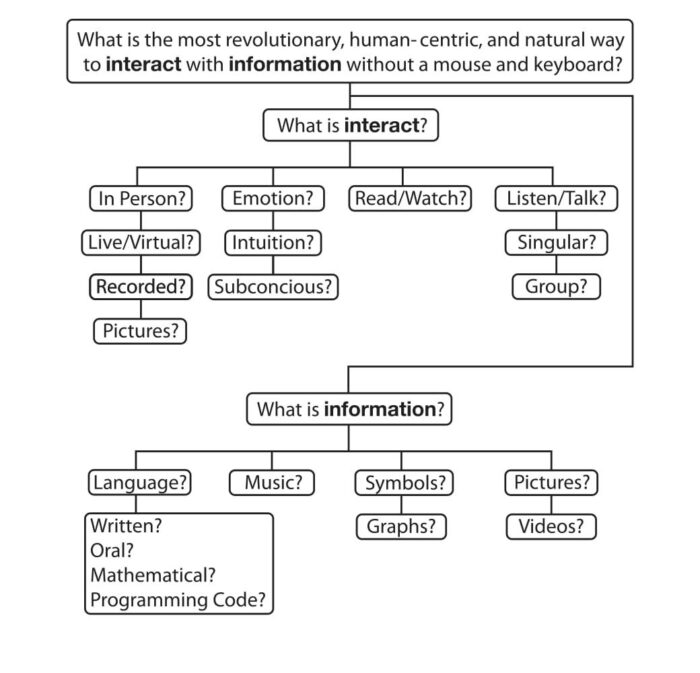Visionary Leadership: Developing Your Personal Problem-Solving Method

To be a leader is to be called in some way. Whether through strength of spirit or strength of the community you are part of, the vision is there. In ways great and small, you are asked to shoulder the burdens others can walk away from. For this reason, a leader needs a problem-solving approach that can be used for every organizational or individual challenge.
Problem-solving can be a creative delight if you maintain the vision inherent in your calling, aligning yourself with a higher purpose as you do so. Below, I share with you some creative problem-solving tips with the hope that these tools not only help you but also inspire you.
Tip 1: Develop Problem Awareness
The solution is inherent in every problem. To fully realize and actualize this, you need to expand your problem awareness, by which I mean your complete understanding of all issues and ideas connected to your problem. This is the foundation of creative problem-solving, and it requires that you use the right language for your problem and ask the right questions.
As I have undertaken the process of creating hundreds of inventions in more than four decades, I have found that it is often best to expand your problem awareness by writing an all-encompassing problem statement that questions everything. A good example of a problem statement would be, “What is the most revolutionary, human-centric, and natural way to interact with information without a mouse and a keyboard?” I encourage you to begin building problem awareness by writing your problem statement in several different ways until you feel you have arrived at the real heart of your problem.
Tip 2: Develop a Personal Problem-Solving Method
Using your problem statement and expanded problem awareness, you can begin to create a personal problem-solving method by taking a couple of steps.
First, surround your problem statement with questions by asking every question possible about your problem. Regarding the problem statement example provided above, a good question to ask may be, “What does it mean to interact?”
Next, use the insight you have gained from your questions to create a hierarchical map. This flow chart is a visual representation of the essential components of your problem. It can be used to define keywords from your problem statement with greater specificity. An example is provided below.

Tip 3: Overcome Mental Blocks That Inhibit Problem-Solving
To move past any obstacle you encounter in the course of your leadership, you absolutely must cultivate a passion for and desire toward your intended outcome. I have found that the best way to do this is by deliberately building belief, which is a potent tool that harnesses all your abilities. You simply must believe in something with every ounce of your soul.
You must also generate the courage to always try again, with the awareness that only your limitations hold you back. The walls will always crumble if you resolve to keep going, guided by belief and passion.
While these are the most powerful concepts you can use to remove mental barriers, I also suggest using the simple advice of identifying the most basic task you can do first and then doing it. If you can break your course of action down and do the most simple thing first, the momentum generated will further your passion and belief.
Tip 4: Eradicate Imaginative Constraints by Breaking Down a Problem With Creativity Gravity
You have the ability to use a problem as fuel, and one way to do this is by eradicating constraints on your imagination. When you open your imagination to new possibilities, you naturally gain the upper hand over your problem.
The stronger the problem statement, the more creativity gravity it has. Creativity gravity attracts ideas to your cause in much the same way that planets are formed through the accumulation of particles. This force is an essential tool that attracts key ideas to your foundational goal. It is especially advantageous when you feel stuck in limbo, as creativity gravity has belief and passion as its basis.
You can develop creativity gravity by asking many questions about the nature of your problem and exploring it from several angles. All questions have some measure of creativity gravity. This process attracts, connects, and merges many new ideas to form a new revolutionary thought or creative perspective.
Tip 5: Strive to Become a Visionary Leader
As a leader, you are creative even if you don’t know it yet. The vision is there. Believe it.
Learning when to lead with bravery and intent and when to step back is crucial. Successfully orchestrating this balance can make you a visionary leader capable of tapping into your creative reserves.
Your leadership experience has helped you develop a creative construct that you already understand intuitively. You deepen this construct the more you develop your own personal problem-solving method by cultivating problem awareness, overcoming mental blocks, and eradicating imaginative constraints. As you do this, you develop the sensitivity necessary to harmonize, fuse, and articulate the clarity of your creative goal for your group as a visionary.
The act of finding your passionate belief and truth is one of the most important and most powerful sources of creativity. To unfurl your full potential as a leader, you must find your passion. Believe in your idealistic vision and have the faith to follow it. In this way, you can get through anything.
Doug Patton is the author ofConquering the Chaos of Creativity and CEO of Patton Design.

